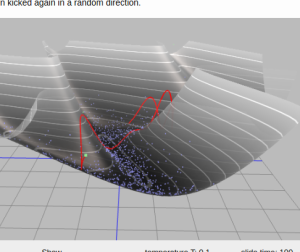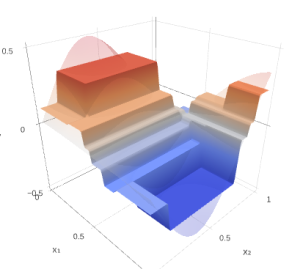An interesting equality from linear algebra
It's a bit mind-blowing when you want to understand this equality geometrically:
we have vectors $x_1, ..., x_n$ in n-dimensional space
Let's take an orthonormal basis in this space $e_1, ..., e_n$ and compute such vectors obtained with via scalar product:
$$ z_i = (< e_i, x_1 >, < e_i, x_2 >, ..., < e_i, x_n >) $$
So the theorem is: $$ \det_{i,j} < z_i, z_j > = \det_{i,j} < x_i, x_j > $$
And the proof is very simple, let's introduce the matrix $A$: $ A_{ij} = <x_i, e_j> $ $$ \det_{i,j} < z_i, z_j > = \det A^T A = \det A A^T = \det_{i,j} < x_i, x_j >$$
Voila! Beautiful, but completely unclear.
 Gradient boosting
Gradient boosting  Hamiltonian MC
Hamiltonian MC  Gradient boosting
Gradient boosting  Reconstructing pictures
Reconstructing pictures  Neural Networks
Neural Networks